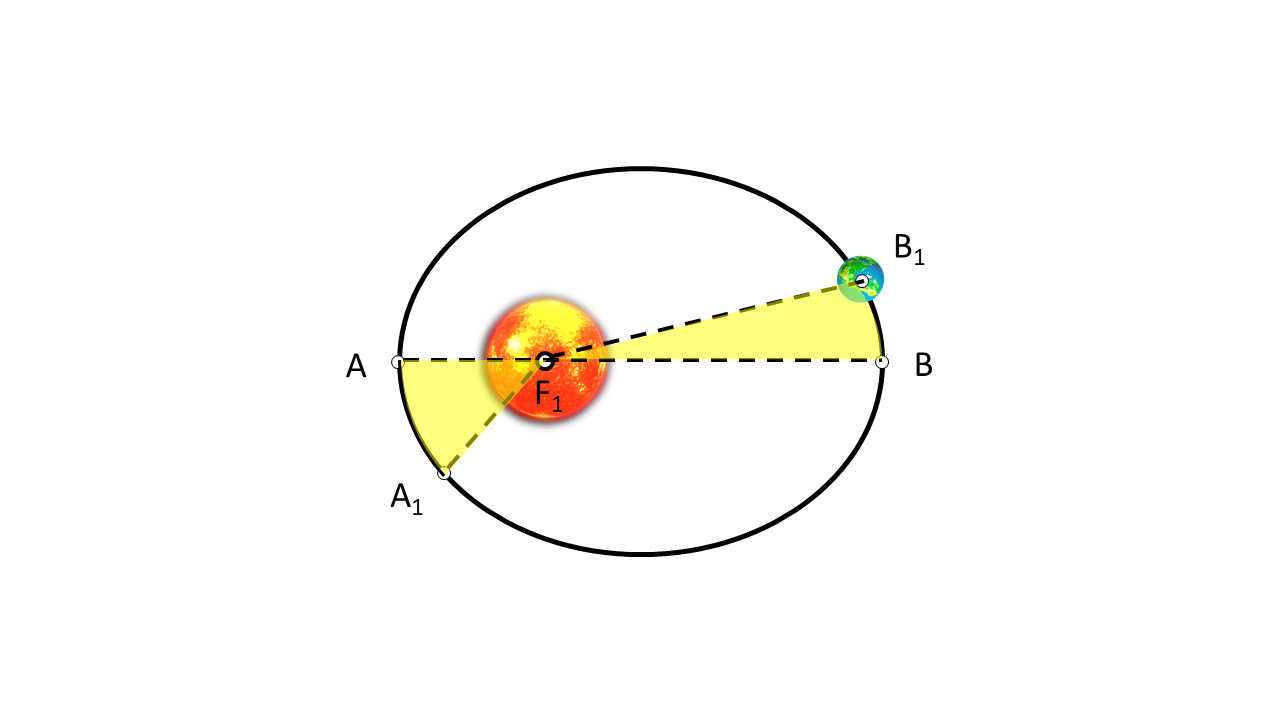14.16 : Kepler's Second Law of Planetary Motion
In the early 17th century, German astronomer and mathematician Johannes Kepler postulated three laws for the motion of planets in the solar system. His first law states that all planets orbit the Sun in an elliptical orbit, with the Sun at one of the ellipse's foci. Therefore, the distance of a planet from the Sun varies throughout its revolution around the Sun.
While in an elliptical orbit, the total energy of the planet is conserved. Therefore, the planet slows down when it is at apogee and speeds up when it is at perigee. These conclusions led Kepler to state his second law, that the radius vector of the planet sweeps out in equal areas in equal time. This means that if a planet takes the same time to travel from A to A1, and then from B to B1, then the areas AF1A1 and BF1B1 are equal, as shown in Figure 1.

Since the area is constant in a given time interval, the planet's sector velocity remains constant. Since the sector velocity is proportional to the planet's angular momentum, KeplerâÃÂÃÂs second law implies that the angular momentum of a planet in an elliptical orbit is conserved.
This text is adapted from Openstax, University Physics Volume 1, Section 13.5 KeplerâÃÂÃÂs Laws of Motion.
Du chapitre 14:

Now Playing
14.16 : Kepler's Second Law of Planetary Motion
Gravitation
4.1K Vues

14.1 : Gravitation
Gravitation
6.1K Vues

14.2 : La loi universelle de la gravitation
Gravitation
12.3K Vues

14.3 : Gravitation entre des masses sphériquement symétriques
Gravitation
818 Vues

14.4 : Interaction gravitationnelle entre corps sphériques
Gravitation
8.2K Vues

14.5 : Coordonnées de masse réduites : problème à deux corps isolés
Gravitation
1.2K Vues

14.6 : La pesanteur terrestre
Gravitation
10.4K Vues

14.7 : La pesanteur sur d'autres planètes
Gravitation
4.0K Vues

14.8 : Rotation de la Terre et poids apparent
Gravitation
3.5K Vues

14.9 : Variation de la pesanteur près de la surface de la terre
Gravitation
2.3K Vues

14.10 : Énergie potentielle gravitationnelle
Gravitation
5.4K Vues

14.11 : Le principe de superposition et le champ gravitationnel
Gravitation
1.3K Vues

14.12 : Vitesse de libération
Gravitation
5.5K Vues

14.13 : Orbites circulaires et vitesse critique des satellites
Gravitation
2.8K Vues

14.14 : Énergie d'un satellite en orbite circulaire
Gravitation
2.2K Vues
See More